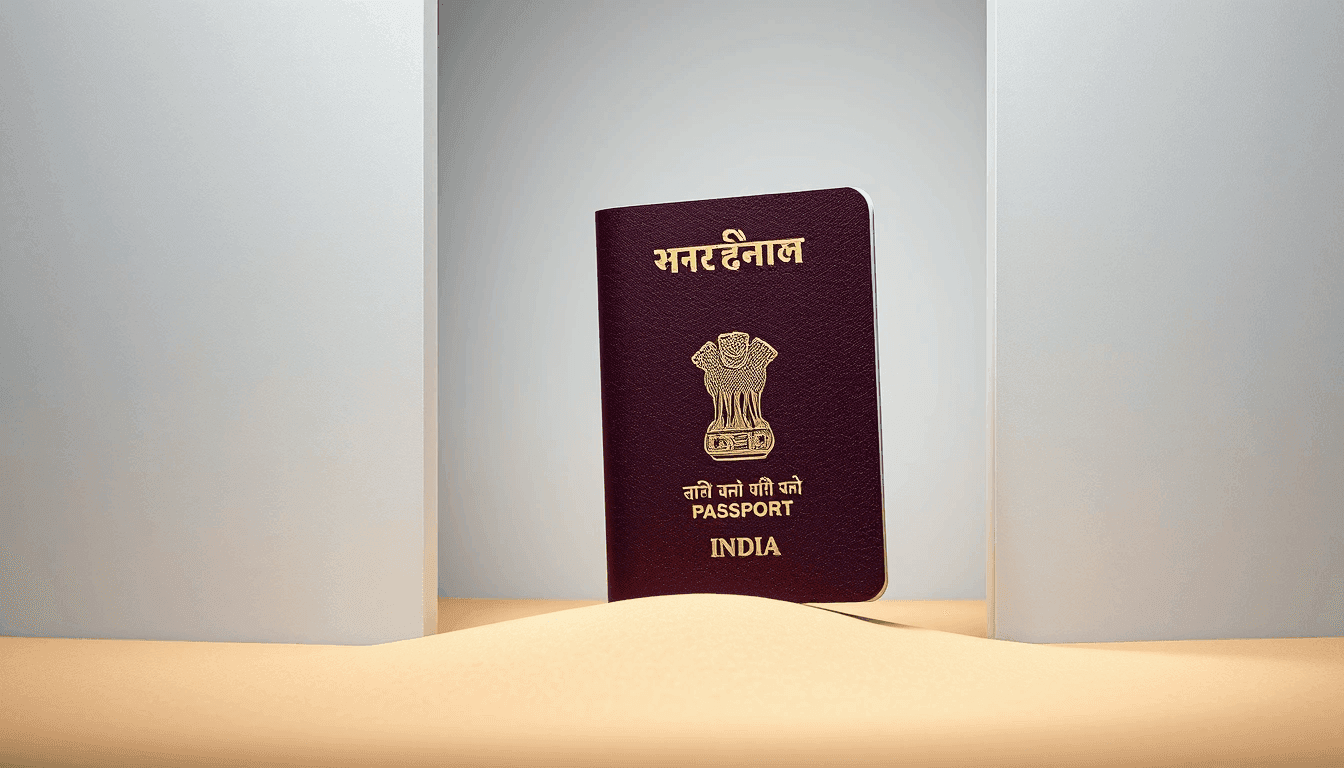

Getting an income tax refund in India can sometimes feel like solving a puzzle, especially if you're a Non-Resident Indian (NRI) living in the UAE. But don't worry, it's a straightforward process once you understand the timeline and the key steps involved. This guide will walk you through everything, from why you might get a refund to when you can expect it.
Let's cut to the chase: For most UAE NRIs, a refund typically takes 20 to 45 days from the date you successfully e-verify your Income Tax Return (ITR), provided there are no discrepancies or further scrutiny. However, several factors can influence this, so let's break it down.
Why Would a UAE NRI Get a Tax Refund from India?
As a Non-Resident Indian in the UAE, your global income is generally not taxable in India. However, any income earned or accrued in India (like rental income, interest on NRO accounts, capital gains from Indian assets, or dividends) is taxable. The most common reason for a refund is TDS (Tax Deducted at Source).
Often, financial institutions or tenants deduct tax at a higher rate (e.g., 20% or 30% for NRIs) because they don't know your total taxable income in India. If your actual tax liability is lower than the TDS deducted, or if your income falls below the basic exemption limit, you're eligible for a refund.
Essential Prerequisites Before Claiming Your Refund
Before you can even think about a refund, make sure you have these in place:
- Permanent Account Number (PAN): This is your unique 10-digit alphanumeric identity for tax purposes in India. It's mandatory.
- Indian Bank Account (NRO or NRE): Your refund will only be credited to an Indian bank account. Ensure it's active, KYC-compliant, and pre-validated on the Income Tax Department e-filing portal. This is a crucial step that often causes delays if overlooked.
- Tax Deducted at Source (TDS) Certificates (Form 16/16A): Collect these from your deductors (e.g., bank for interest, tenant for rent, buyer for property sale). They prove the tax already deducted.
- Income Tax Return (ITR) Filing: You must file your ITR to claim the refund. This is where you declare your Indian income and the TDS deducted.
The Income Tax Refund Process: A Timeline Explained
Here's a breakdown of the typical timeline, assuming everything goes smoothly:
Step 1: Filing Your Income Tax Return (ITR)
- Timeline: Generally, the due date for filing ITR for individuals is July 31st of the assessment year (the year following the financial year). For example, for income earned in Financial Year 2023-24 (April 1, 2023 - March 31, 2024), the ITR due date is July 31, 2024.
- What you do: You file your ITR online via the e-filing portal, declaring all your Indian income and the TDS deducted.
- Tip: File your ITR as early as possible after the portal opens, especially if you expect a refund. This gives you ample time for processing.
Step 2: E-Verification of Your ITR
- Timeline: Immediately after filing your ITR, or within 30 days of filing.
- What you do: Your ITR is not considered valid until it's e-verified. The easiest ways are via Aadhaar OTP, Net Banking, or EVC through your bank account.
- Why it matters: No e-verification means no processing, and thus, no refund. Many NRIs forget this step. If you miss the 30-day window, your ITR will be treated as invalid, and you'll have to file a revised return (if permissible) or face consequences.
Step 3: Processing by the Centralized Processing Centre (CPC), Bengaluru
- Timeline: This is where the core processing happens. Typically, it takes 20 to 45 days from the date of successful e-verification.
- What happens: The CPC matches the data you provided in your ITR with the data available with the Income Tax Department (e.g., TDS data in Form 26AS). They check for any discrepancies.
- Insight: This timeline can extend if there are mismatches, or if your case is selected for preliminary scrutiny (though this is less common for straightforward refund claims).
Step 4: Intimation Under Section 143(1)
- Timeline: Usually issued immediately after the CPC processing is complete, within the 20-45 day window mentioned above.
- What it is: This is an automated notice from the Income Tax Department confirming the processing of your return. It will state whether your return has been accepted as filed, if there are any adjustments, and if a refund is due.
- What you do: Check your registered email and SMS for this intimation. It's important to review it.
Step 5: Refund Generation
- Timeline: If a refund is determined to be due in the Intimation U/s 143(1), the refund is generally generated within a few days of the intimation.
- What happens: The Income Tax Department initiates the refund process. You'll often see a "Refund Generated" status on the e-filing portal.
Step 6: Refund Disbursement (Credit to Your Bank Account)
- Timeline: Once generated, the refund usually takes 5 to 10 working days to be credited directly to your pre-validated Indian bank account.
- What happens: The refund amount is sent to your bank.
- Crucial Point: If your bank account is not pre-validated, or if the details are incorrect, the refund will fail, leading to significant delays. You'll then need to update your bank details and request a re-issue of the refund.
Total Estimated Timeline for a Smooth Refund
Assuming you file and e-verify on time with no issues:
ITR Filing & E-verification (Day 0) → CPC Processing (Day 20-45) → Intimation & Refund Generation (Day 45-50) → Refund Credit to Bank (Day 50-60)
So, realistically, expect your refund within 1.5 to 2 months from the date of successful e-verification, given no complications.
Common Reasons for Delays & How to Avoid Them
- Non-Validation/Incorrect Bank Account Details: This is the #1 reason for delays. Always pre-validate your bank account on the e-filing portal before filing your ITR. Ensure the account is active and KYC-compliant.
- Failure to E-Verify ITR: Your return won't be processed without e-verification within the stipulated time.
- Discrepancies in ITR: Mismatches between your ITR data and the Income Tax Department's records (e.g., Form 26AS, AIS/TIS) can lead to processing delays or even notices for clarification.
- Outstanding Tax Demand: If you have any previous outstanding tax demands, your refund might be adjusted against them.
- Manual Scrutiny: Though rare for simple refund claims, if your return is selected for manual scrutiny (e.g., a notice under Section 143(2)), the process will be significantly longer.
- Technical Glitches: Occasionally, there might be technical issues with the portal or banking channels.
How to Check Your Refund Status
You can easily track your refund status online:
- Visit the Income Tax Department e-filing portal.
- Log in using your PAN and password.
- Go to
e-File>Income Tax Returns>View Filed Returns. - Select the relevant Assessment Year and click
View Details. - You'll see the current status of your ITR and, if applicable, your refund.
Alternatively, you can check on the TIN NSDL website by entering your PAN and Assessment Year, or on the bank's website if they have a dedicated refund status checker.
What if Your Refund is Delayed Beyond the Expected Timeline?
If your refund is taking longer than expected (e.g., over 60 days from e-verification with no update), here's what you can do:
- Check Status Regularly: Keep an eye on the e-filing portal.
- Verify Bank Account: Confirm your bank account is still pre-validated and active.
- Raise a Grievance: On the e-filing portal, you can go to
Services>Grievancesand lodge a complaint regarding your delayed refund. Provide all relevant details. - Contact Aaykar Sampark Kendra (ASK): You can call the helpline at 1800-103-0025 or 1800-419-0025.
Important Considerations for UAE NRIs
- NRE/NRO Accounts: Ensure your refund is linked to an account that can receive it. While NRO accounts are common for Indian income, NRE accounts are also often used and generally acceptable for refunds. Just ensure it's pre-validated.
- Foreign Income: Remember, your income earned in the UAE is generally not taxable in India. Do not include it in your Indian ITR unless specifically required by some DTAA clause or specific circumstances.
- Double Taxation Avoidance Agreement (DTAA): While useful for avoiding double taxation on certain income streams, for a simple refund claim due to excess TDS, the primary focus is proving your lower tax liability in India through your ITR.
Claiming an income tax refund as a UAE NRI might seem daunting, but by understanding the process, being proactive with your documentation, and promptly e-verifying your return and pre-validating your bank account, you can ensure a smooth and timely refund experience. Be patient, but also be diligent in tracking your status.

About Harleen Kaur Bawa
Harleen Kaur Bawa is a licensed immigration attorney specializing in Canadian immigration and Indian services. With extensive experience in family sponsorship, Express Entry, refugee claims, and OCI services, she has successfully helped hundreds of clients navigate complex immigration processes.
Harleen holds degrees from York University - Osgoode Hall Law School and the University of Toronto, and is certified by the Law Society of Ontario and the Immigration Consultants of Canada Regulatory Council. She is committed to providing personalized, professional legal services to help clients achieve their immigration goals.
Related Articles

Renewing Your Indian Passport in UAE Without the Old Passport: A Practical Guide
Lost, stolen, or damaged Indian passport in UAE? Get the essential guide to re-issue. Understand police reports, documents, fees, and timelines for a smooth process.

Your Guide to Child Birth Registration at the Indian Embassy Dubai: A Step-by-Step Process
Simplify newborn Indian passport & birth registration in Dubai for expats. Our guide helps Indian parents navigate documents & avoid pitfalls efficiently.

Fixing OCI Application Photo and Signature Upload Errors in the UAE: Your Practical Guide
Applying for OCI from UAE? Fix common photo & signature upload errors like dimensions, file size & background. Get precise steps to ensure your application isn't rejected.